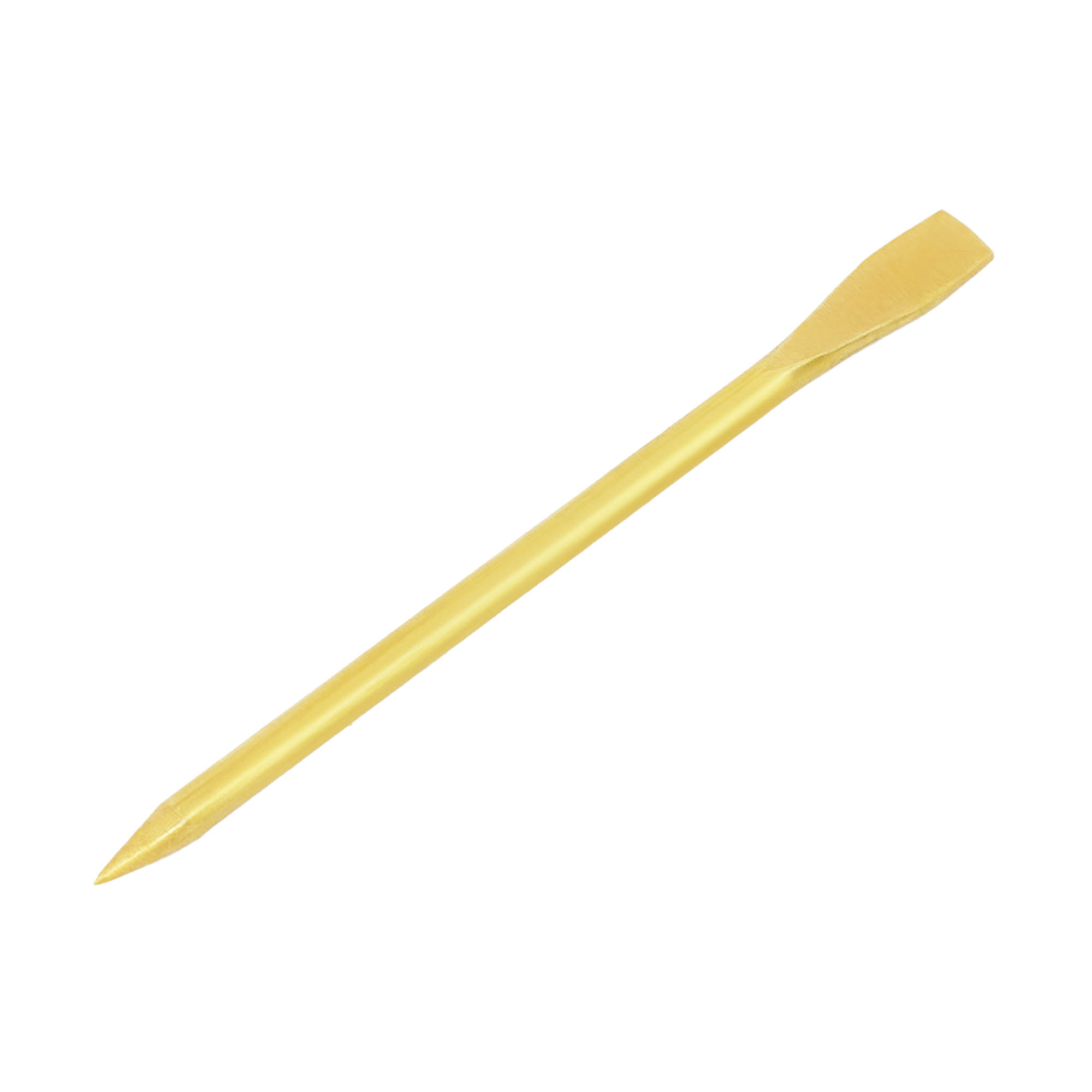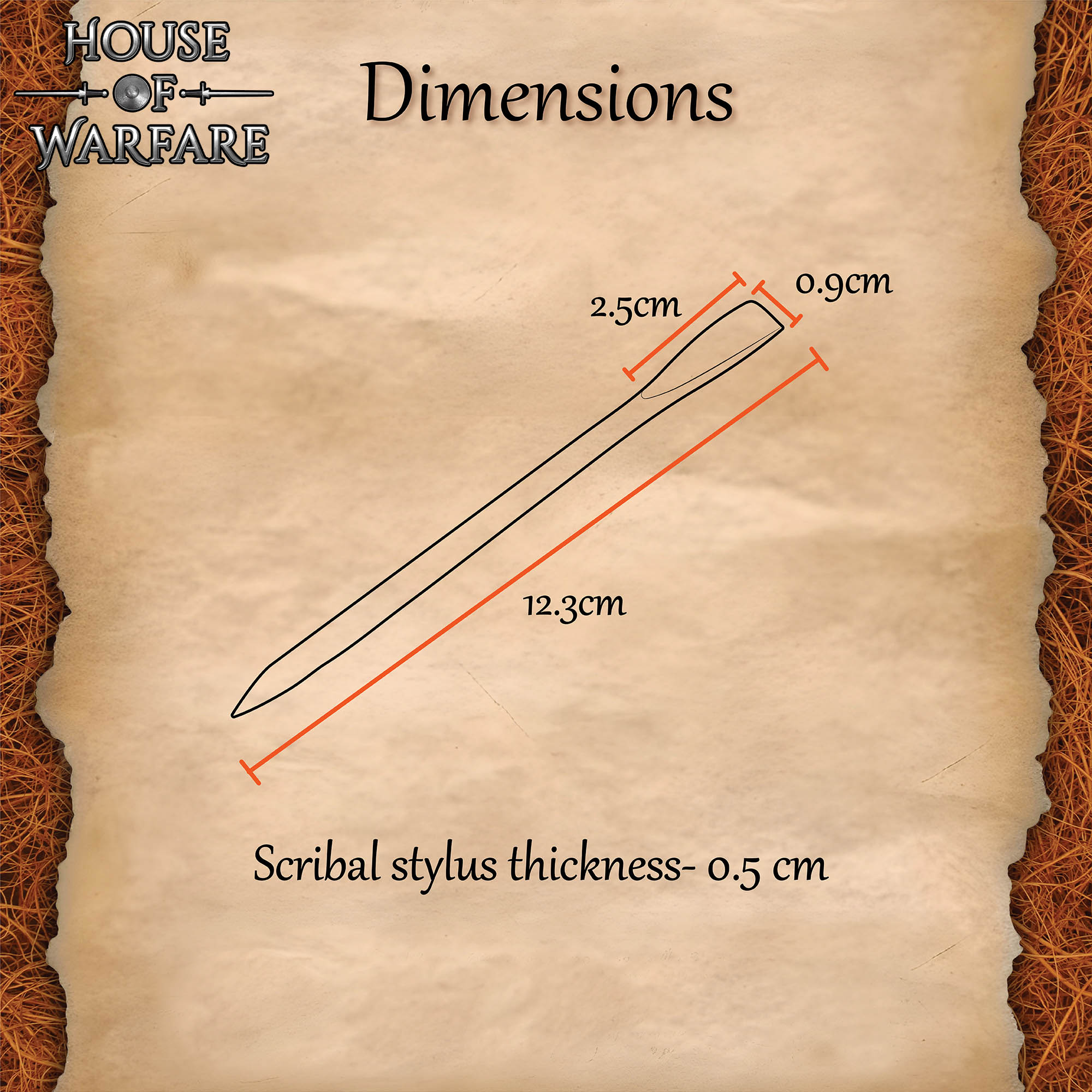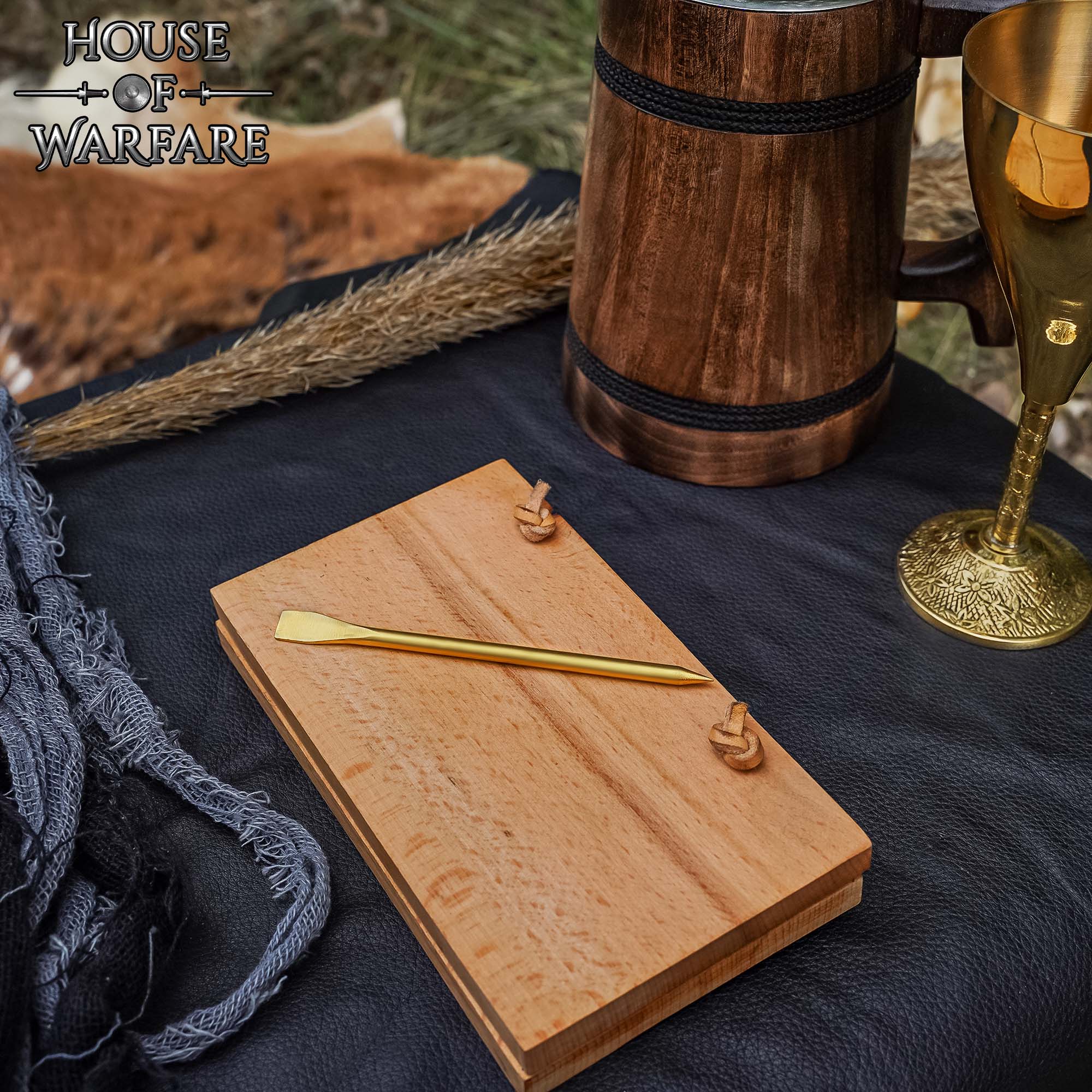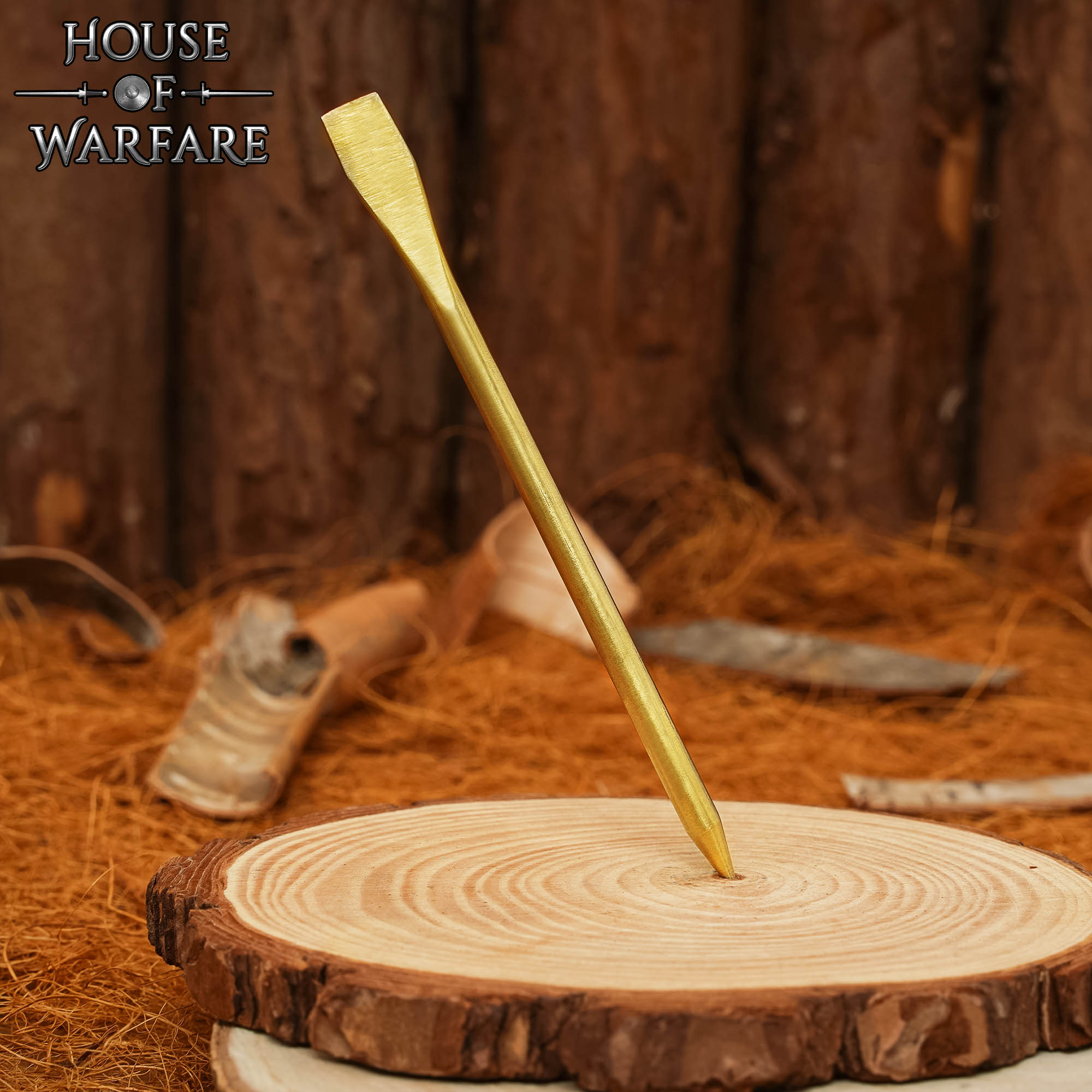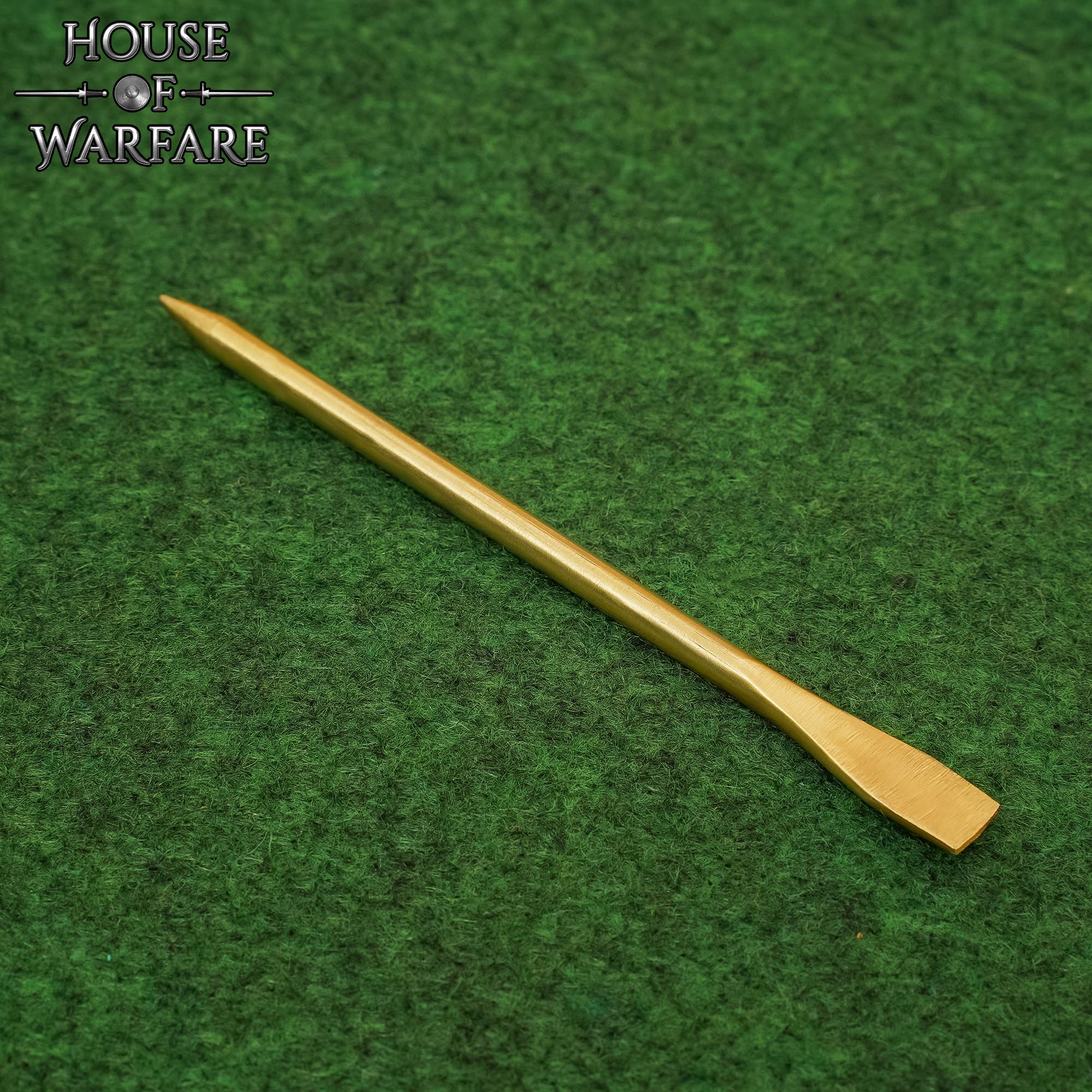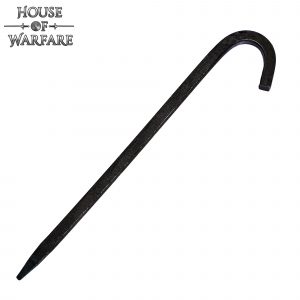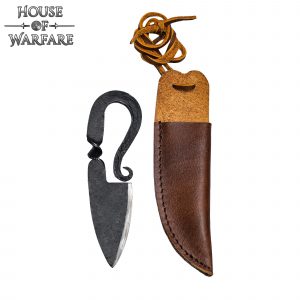Here’s some historical significance of the product:
The Stylus in Ancient Rome: History and Use
The stylus (stilis in Latin) was a fundamental writing tool in ancient Rome, used primarily with wax tablets, known as tabulae ceratae. This simple yet effective instrument played a central role in daily Roman life, from education and business to legal matters, due to its portability and ease of use. The design and functionality of the stylus make it an enduring symbol of Roman practicality and innovation in writing.
Design of the Stylus
The Roman stylus was a slender, pointed tool typically crafted from materials such as metal, bone, or wood. Its shape was utilitarian, featuring two distinct ends, each serving a critical function. The pointed end was used for writing, making indentations into the soft beeswax surface of a wax tablet. This end had to be sharp enough to create clear, legible letters without causing excessive damage to the wax, ensuring the surface could be reused multiple times.
The other end of the stylus was flat or rounded, designed to smooth the wax when corrections or erasures were necessary. This erasing function was achieved by gently pressing or rubbing the flat end over the surface of the tablet, effectively “erasing” the writing by flattening the wax and preparing it for new inscriptions.
The Wax Tablet: A Reusable Medium
Wax tablets were wooden boards coated with a layer of beeswax, making them a reusable medium for writing. Romans used them for a wide variety of tasks, including note-taking, record-keeping, and educational exercises. The stylus and wax tablet combination was practical, allowing users to correct mistakes easily or reuse the surface without wasting materials. These tablets could be tied together into a codex, a precursor to modern books, allowing for multiple pages to be inscribed and read.
The Stylus in Daily Roman Life
In Roman society, the stylus was an essential part of daily routines. Students used them in schools for practising their writing and arithmetic, merchants kept their business records on wax tablets, and legal officials used them to draft and record contracts or decisions. The use of wax tablets and the stylus was practical for temporary records, as documents could later be transferred to more permanent materials like papyrus or parchment.
While the stylus was a simple tool, its design reflected the efficiency and resourcefulness of Roman society. A well-crafted stylus, particularly those made from precious metals, was often considered a symbol of wealth or status, though more basic versions of wood or bone were widely used by the general populace.
Linguistic Legacy
The term stilus is the Latin root for the modern word “style,” demonstrating how deeply the concept of writing was embedded in Roman culture. The broader significance of the stylus extended beyond its physical use; it symbolized one’s method of expression, whether in letters or composition. The Romans also used the verb scribere (to write) to describe the action of inscribing with the stylus, while the term delere (to erase) described the smoothing of the wax with the flat end of the instrument.
Conclusion
The Roman stylus was more than just a tool; it was an essential component of Roman education, business, and legal processes. Its simple yet effective design, coupled with the practicality of wax tablets, made it a ubiquitous part of Roman daily life. Even today, the influence of the stylus endures, not only in the physical concept of writing tools but also in the very words we use to describe written expression and style. The stilus is a testament to the Roman ability to blend utility and cultural significance in even the most everyday objects.

